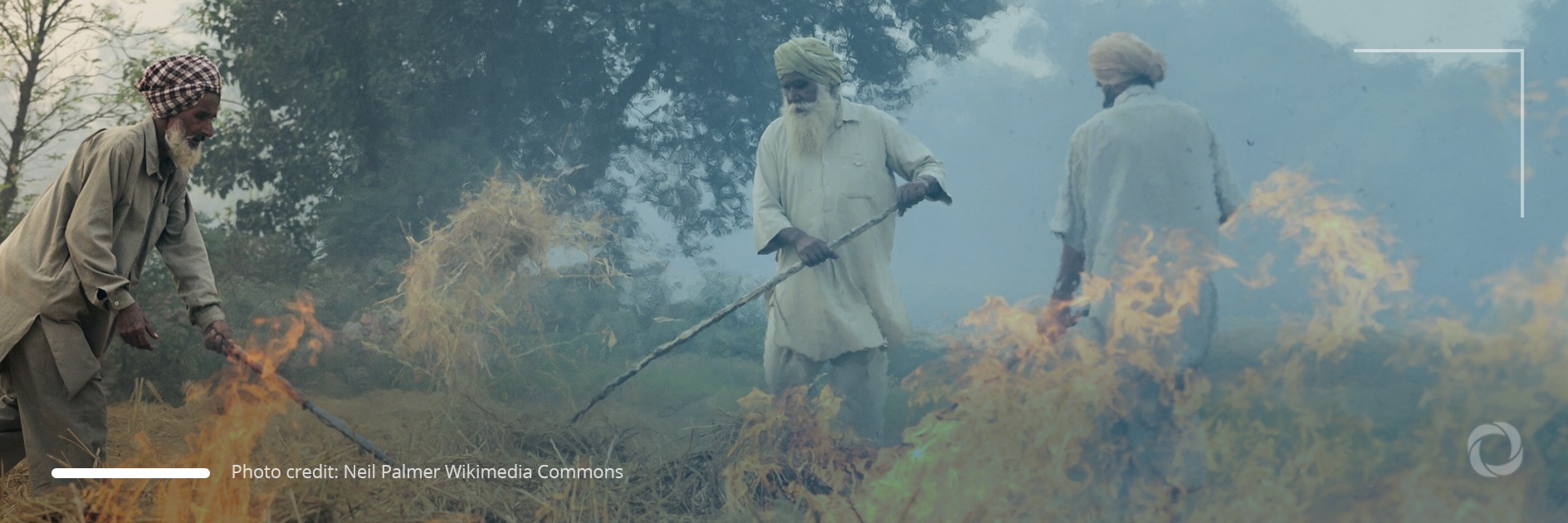Air pollution kills over a million people a year in India and causes about US$95 billion in annual losses. Every winter, India’s largest cities are choked by deadly smog caused by a number of factors, with water crisis being one of these.
Between mid-March and mid-October, the air quality in the capital of New Delhi is bearable but in the winter it is hazardous for people living there. High levels of air pollution stem from various factors including coal burning, transport, and the burning of crop waste and after-harvest residue. The latter is burnt because of water scarcity despite the fact that this is forbidden by government and that fines are imposed on those responsible.
Water shortage forces farmers to burn stubble
Smoke comes from the paddy and wheat fields in Punjab and Haryana, the states that neighbor New Delhi which both grow a large amount of rice but consume only 48 billion cubic meters (bcm) of groundwater a year whereas the overall municipal water requirement in India is 56 bcm a year. However, excessive agriculture leads to the rapid use of groundwater and it is estimated that Punjab will totally run out of groundwater within just 20 to 25 years.
In the past, the Indian government did not encourage farmers to save water by flattening tariffs for the operating of bore wells before finally lifting them altogether. Farmers were able to extract water without any restrictions which enabled India to be food-secure thanks to rich harvests of rice and wheat. Unfortunately, several decades ago farmers realized that the supply of water was beginning to splutter and, to address this problem, in 2009 the government decided to forbid farmers to sow paddy before a pre-determined date of the monsoon season to limit the use of bore wells in the peak summer months in order to conserve water. That resulted in a delay in planting the paddy fields thus narrowing the gap between the paddy harvest and wheat sowing which would mean financial losses for farmers. In order to lengthen this gap, they began to clear fields by burning the stubble which has subsequently led to excessive air pollution in Northern India.
India’s water scarcity
India is experiencing a water crisis. Home to 18% of the world population, it possesses only 4% of the world’s freshwater resources and this situation is deteriorating due to increasingly more frequent droughts driven by climate change.
India is the world’s biggest extractor of groundwater, accounting for 25% of the total, while about 70% of the water sources are contaminated and major rivers are heavily polluted. A 2018 report by NITI Aayog, an Indian governmental policy think-tank, indicated that nearly half of the Indian population, i.e., 600 million people, are affected by extreme water stress. At the same time, 75% of India’s rural households do not have access to potable water as they are not connected to the pipe system. However, the government is planning to deal with the problem, and in 2019 Prime Minister Narendra Modi announced that his administration would provide potable water through taps to 191 million rural households by 2024.

